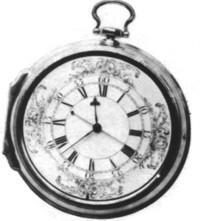
JOSE DE ACOSTA (n. Medina del Campo, 1540 - m. Salamanca, 1600)
studied at Salamanca and Alcalá de Henares, and in 1572 was sent to Peru by the Society of Jesus. He taught theology in Lima and held various church offices in the colony, in 1576 he was appointed provincial of the order and founded several colleges across the length and breadth of the country, traveling constantly for him, thus gaining a great knowledge of Peruvian land and its people then usher in their writings. In 1583 participates in the Third Council of Lima, where Christian doctrine is translated into Quechua and Aymara, to facilitate the evangelization of the Indians. Acosta left Peru in 1585 Mexico Road, where he remained for 3 years before returning to Spain. In 1592 he traveled to Rome to defend their reformist ideas based on what he had seen and lived in the Americas, in opposition to General Order in the V Congregation of the Society of Jesus. But the order is finally sided with the General, so that Acosta was disgraced and had to return beaten Spain. In 1597 he was appointed rector at the College of Salamanca, where he died in February 1600.
Fray José de Acosta, and one of the advocates of the Indians during the colonial period, was undoubtedly a humanist and scientific precursor of modern thought and of geography as we know it today. Among his works, and apart from a lavish production theological stand Salute Indorum De Procuranda (1588) and De enactment Evangelii apud Barbaros (1588) on its work of evangelization in America, in which he criticized the way in which secular and religious led some English in the colonies and their difficult behavior preach something totally opposite of what the Indians saw every day, although many of these criticisms were censored before publication of the work. However, as Fray José attain global recognition would be by two of his works: De Natura Novi Orbis (1588) and, above all, his Natural and Moral History of the Indies (1590). Fray José summarized them practically new geographical knowledge that had emerged from the findings and criticized the old notions of geography based on Greco-Roman classics and the Bible. While one can say that it is easy to talk for example about the roundness of the earth after trip Magallanes, the work of the Jesuit is full of other extrapolations from what was known at that time which later proved very successful such as the existence of Australia or the idea that the Indians came to America from Asia by a narrow strip of land or that should unite the two continents to the north and would not be discovered until 1728 by the Danish Vitus Bering :
"This speech I have said is for me a big assumption to think that the new world, we call India, divisive and not entirely separate from another world. And tell me, I have for me days ago, the earth and the other one somewhere else, together, and continue, or at least far ahead and comers. So far at least there is no certainty to the contrary. Because the Arctic pole, called North, it is discovered and known throughout the length of the earth ... "
Acosta also did not believe in his work (giving all sorts of explanations that today strike us as more rational ) of classic such as the Atlantis of Plato, which would have left the people of America, or that American Indians came from the lost tribes of Israel , according to some basis in the Bible, and others simply ridiculed like the idea of \u200b\u200bSt. Augustine that if the earth was round the antipodes should live upside down. Acosta was thus a precursor of the new science is going to leave behind the principle of authority of the classics and, above all, of the Holy Scriptures to base their knowledge on everything on our own experience and reason, and it is strange to think that a XVI century Jesuit could have a more open mind Some people in our brand new century, who refuse to see beyond what the Bible says.


